Coral Reef Facts: Everything You’ve Ever Wanted to Know

In this article, we take a closer look at our coral reefs in Lembeh, North Sulawesi. Did you know that Lembeh offers great coral reef diving as well as muck? Find out more here….
Introducing The Coral Triangle
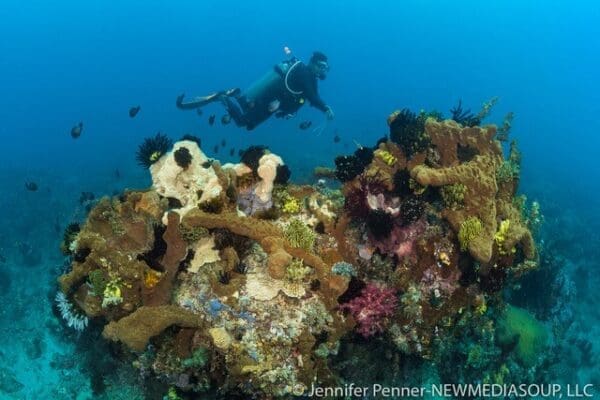 Our home in North Sulawesi is located at the heart of the Coral Triangle. The Coral Triangle is the planet’s richest center of marine life and coral diversity, with over 6,000 species of fish, 76% of the world’s coral species, and an inspiring array of other marine life.
Our home in North Sulawesi is located at the heart of the Coral Triangle. The Coral Triangle is the planet’s richest center of marine life and coral diversity, with over 6,000 species of fish, 76% of the world’s coral species, and an inspiring array of other marine life.
And we are positioned right in the center of it!
Corals in the Lembeh Strait
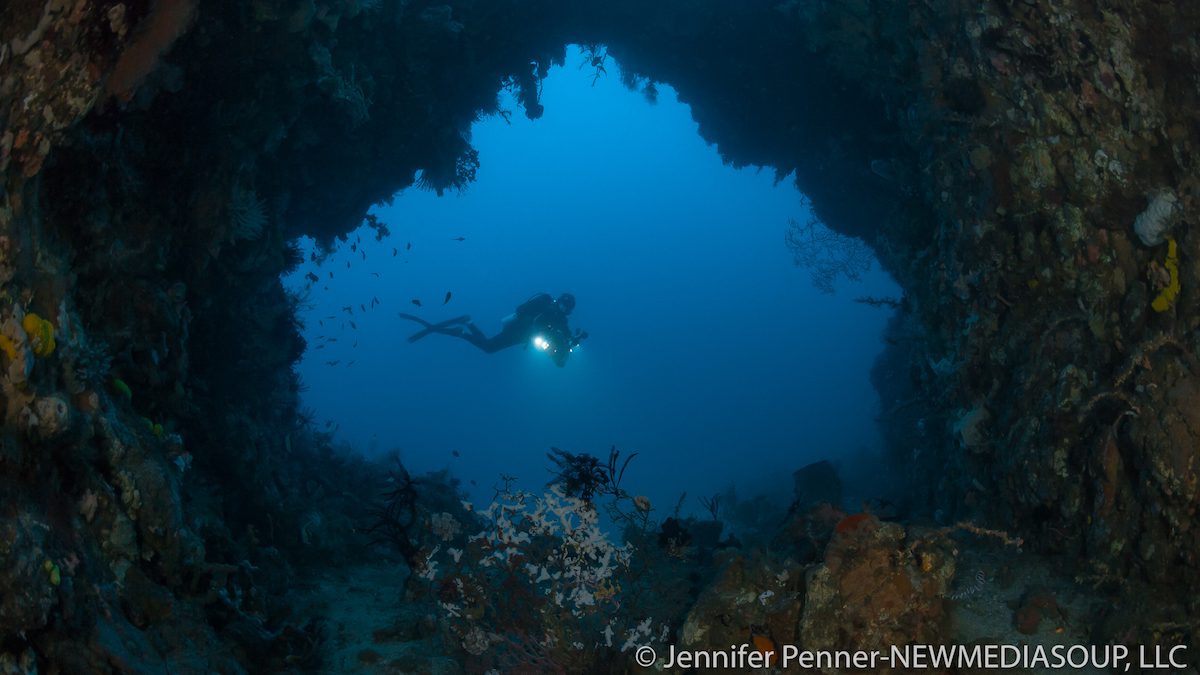
Diver in Angel’s Window, Lembeh, North Sulawesi
At the north end of the Lembeh Strait we have stunning reefs. Although Lembeh is best known for muck diving and critters, we often travel to the north of our sites to dive at Angel’s Window and California Dreaming that showcase the best hard and soft coral reefs in Lembeh. Here you will find an explosion of color as well as schooling fish and critters.
Embark on your own Lembeh adventure and encounter the unexpected with our guide to “Introducing Muck Diving and Lembeh Strait”
Benefits of Coral Reef Ecosystems
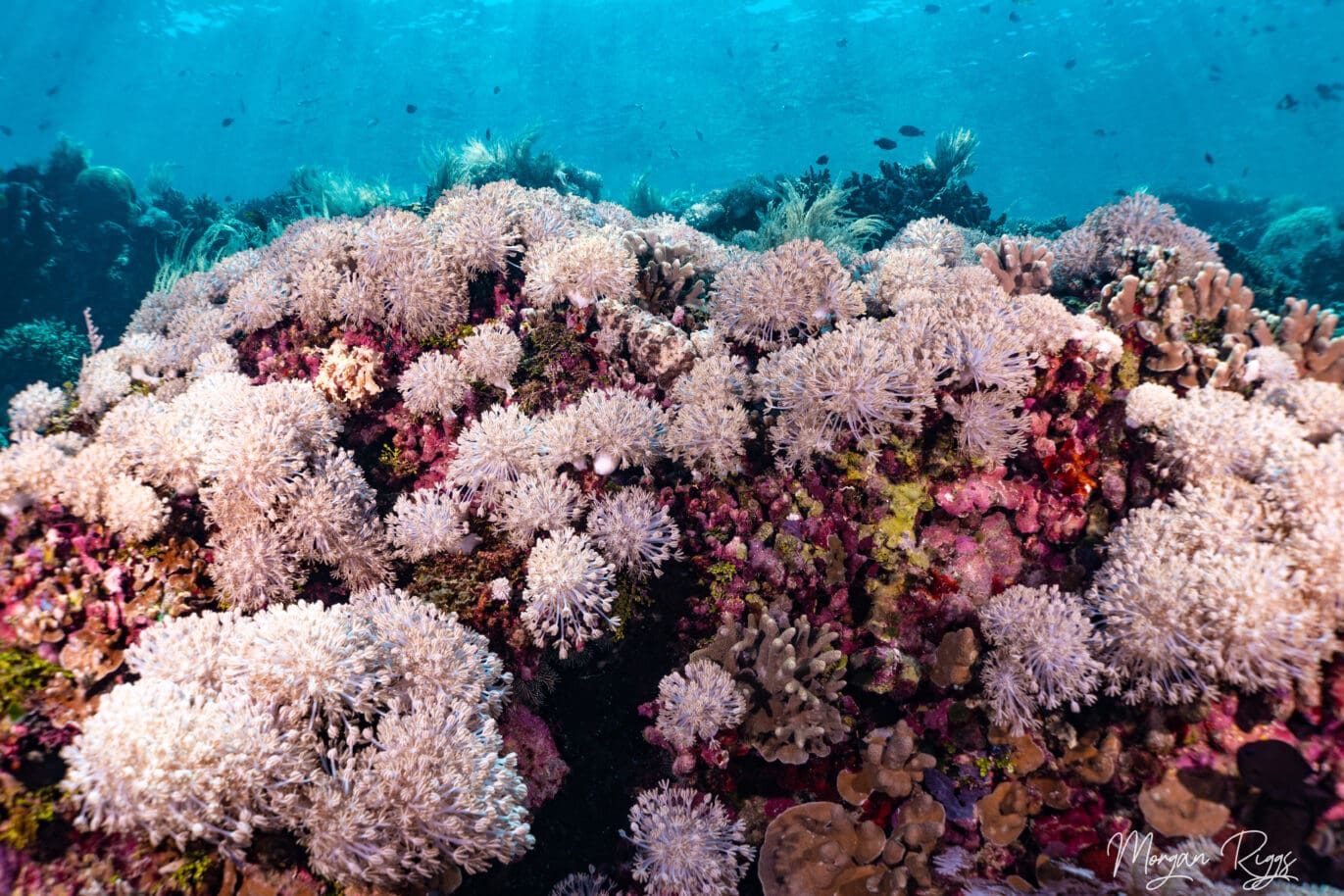
Wherever you dive around the world, coral reefs protect the shorelines and provide habitat for marine life. Some of our reefs (and mangroves) are nurseries for juvenile fish and critters. These reefs often attract megafauna too and we have even seen pods of pilot whales as they travel across the top of the Strait.
Hard Corals in Lembeh
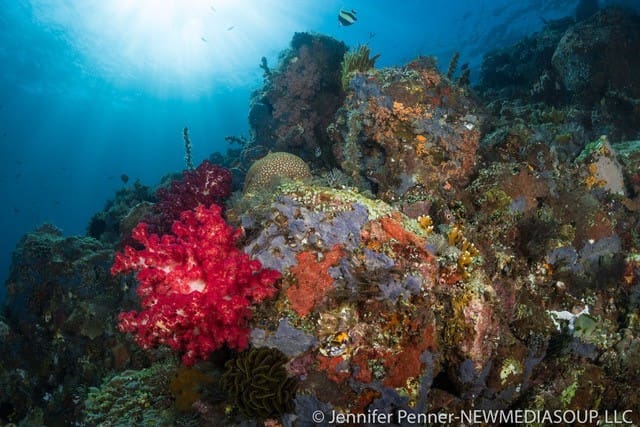
Coral reef in Angel’s Window, Lembeh, North Sulawesi
Hard corals are the framework that forms coral reefs (hence the name ‘reef building’). There are over 3,000 species of hard corals, which are also known as stony corals, reef-building corals, or hexacorals. One of the most common types of hard coral that we see here in Lembeh is brain coral (Platygyra), other common types that are found on our reefs include table corals, branching corals (Acropora), and plate corals (Monitpora).
Hard corals are not plants – They are actually animals that are known individually as polyps. Polyps are related to anemones and jellyfish. They develop in colonies that form entire reef structures. Only hard corals can build reefs – soft corals cannot.
A hard coral polyp has a sac-like body and an opening, or ‘mouth’, encircled by stinging tentacles called nematocysts. The polyp uses calcium and carbonate ions from seawater to build itself a hard, cup-shaped skeleton made of calcium carbonate (limestone). This limestone skeleton protects the soft, delicate body of the polyp.
Most coral polyps have transparent bodies. Their skeletons are white, like human bones. Generally, their brilliant color comes from the zooxanthellae (tiny algae) living inside their tissues.
Did you know that several million zooxanthellae live and produce pigments in just one square inch of coral? These pigments are visible through the transparent body of the polyp and are what gives coral its beautiful color. You only have to look at the rich pink/red color of some of our brain or table corals to see this phenomenon in action.
Soft Corals in Lembeh
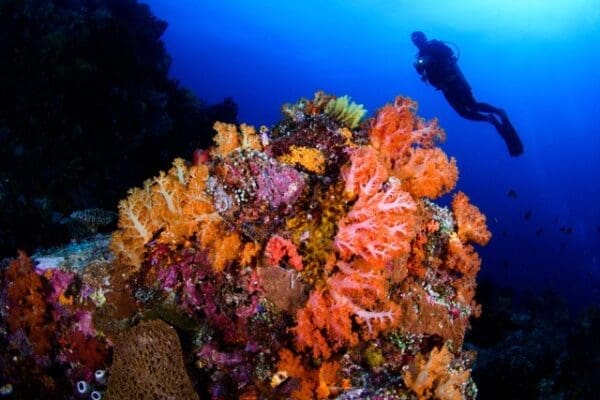
Soft corals are extremely diverse and also include gorgonians, sea fans, sea pens and sea feathers. These corals have a flexible, sometimes leathery, appearance. Although many resemble plants, they are actually animals.
Soft corals are colonial organisms, which means they are formed of colonies of polyps. The polyps of soft corals have eight feathery tentacles, which is why they are also known as octocorals. One way to tell the difference between soft corals and hard (stony) corals is that the polyps of hard corals have six tentacles, which are not feathery.
Threats to Coral Reef Ecosystems
Coral reef systems around the world are struggling but here in North Sulawesi, our recent coral research, in partnership with Murex Resorts, shows that our reefs are thriving.
Protecting Coral Reefs and What We Do
We have multiple initiatives at Lembeh Resort that we undertake to protect, conserve, and promote our reefs… here are just a few of our ongoing actions.
Cleanups – Beach and Underwater
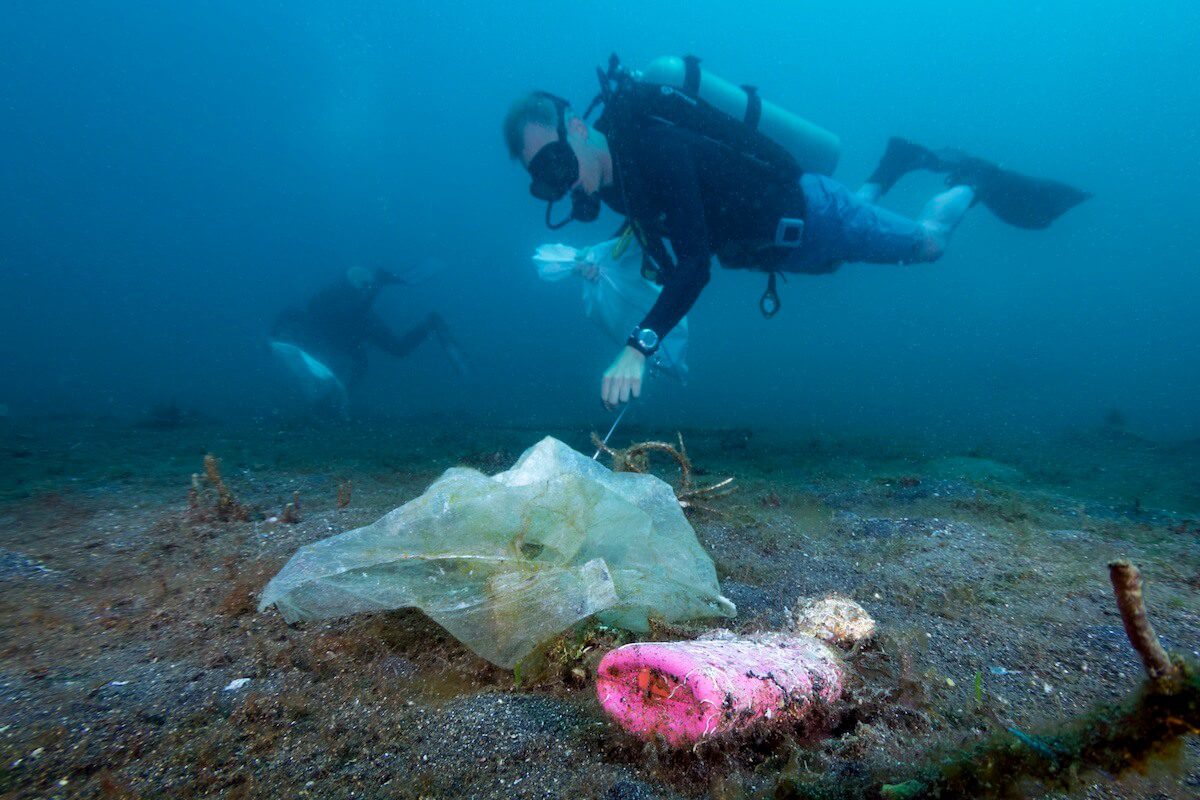
Lembeh Resort Cleanup Dive
We regularly make cleanup dives and beach cleanups. This helps to remove any debris that could damage or suffocate corals.
Our House Reef
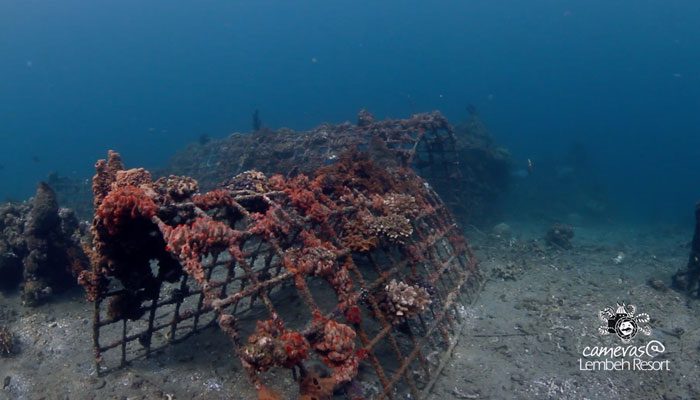
Lembeh Resort House Reef
We have a number of underwater structures that provide corals with solid surfaces on which to grow. These coral encrusted structures provide habitat for a variety of fish and critters.
Lembeh Foundation
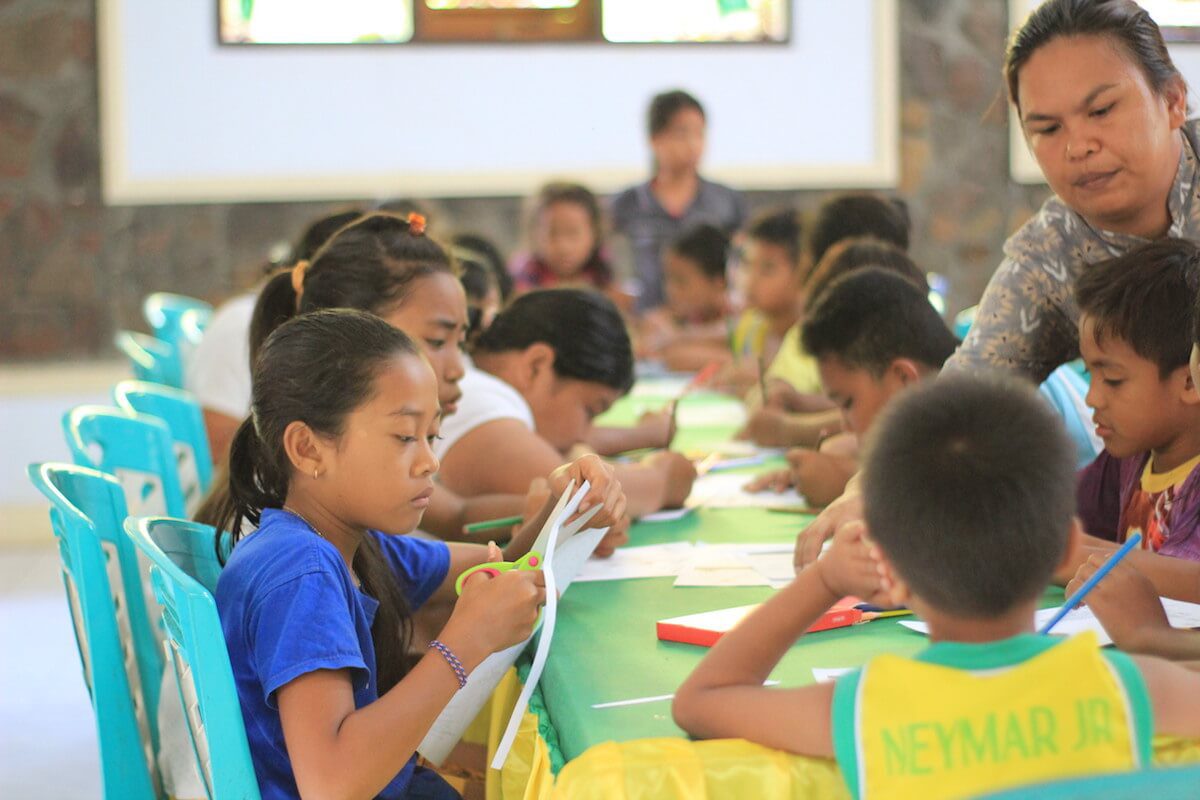
The Lembeh Foundation Learning Center provides children with education about conservation, sustainability and Lembeh’s natural environment
The Lembeh Foundation provides educational activities in our local villages that promote conservation and sustainability. We often take village children snorkeling and teach them about the incredible marine life found in Lembeh.
Book Your Stay
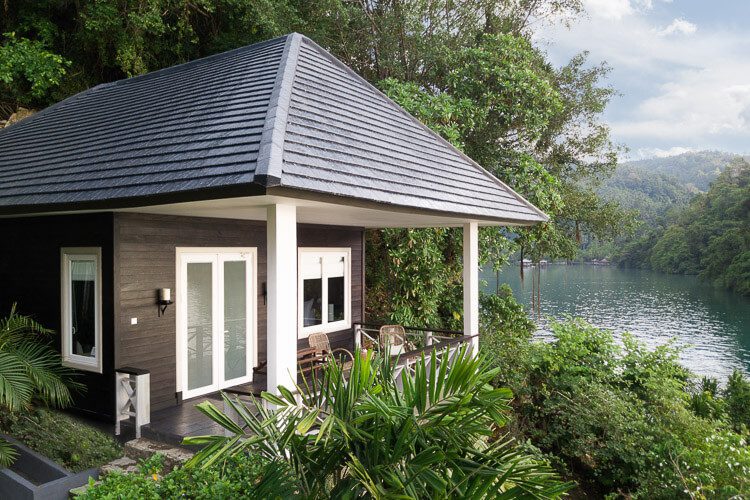
If you are ready to book your stay and explore our reefs with us – or would like more information about our rates and availability contact us at reservations@LembehResort.com.
Our reservations team looks forward to assisting you!
FURTHER READING
If you enjoyed reading this article, you may also enjoy some of our other articles about the unique marine life found here in the Lembeh Strait:
Pygmy Seahorses In The Lembeh Strait
The Hairy Shrimp: Phycocaris simulans
Colors And Combat: Exploring The Tiger Mantis Shrimp In Lembeh



